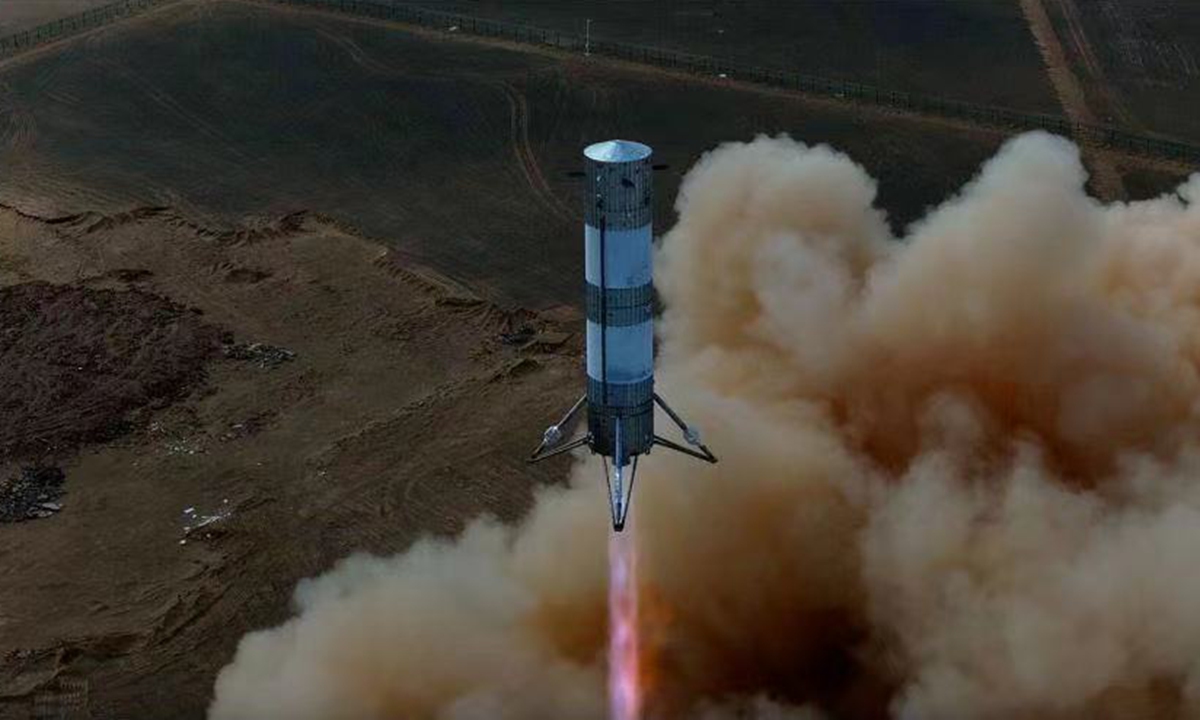
Photo: Courtesy of LandSpace
China's private space company LandSpace successfully conducted a 10-kilometer vertical takeoff and vertical landing (VTVL) test on Wednesday, marking the country's first in-flight ignition during the descent stage.
The Beijing-based firm shared the achievement with the Global Times, highlighting the significant step toward developing its ZQ-3 reusable rocket.
The test is seen as a key step in the development China's commercial aerospace industry and in particular the mastering of heavy duty, low cost, high launch-frequency reusable rockets, according to analysts.
The flight test was completed with the VTVL-1 test rocket at the Jiuquan Satellite Launch Center in Northwest China's Gansu Province on Wednesday.
The total length of the flight took 200.7 seconds and reached a height of 10,002 meters above surface. During its descent, the rocket completed an in-flight engine ignition at a height of 4.64 kilometers, which is the first of its kind in China. The rocket safely achieved vertical soft landing to a recycling pad located 3.2 kilometers away from the launch pad.
The height of the recent test significantly surpasses that of a previous test in January, during which the rocket remained airborne for approximately 60 seconds and reached a height of 320 meters.
After the two successful trial tests, the company said it is planning the maiden launch of ZQ-3 in 2025 and achieving recyclable rocket components in 2026, striving to achieve important breakthroughs in realizing heavy payload, low cost, reusable launches within three years.
VTVL-1 is liquid oxygen, methane-propelled single-stage test rocket designed to develop the vertical takeoff and landing technique for LandSpace's ZQ-3 reusable rocket.
The VTVL-1 has a total length of 18.3 meters and a diameter of 3.35 meters, with a launch weight of 50.3 tons and 68 tons of take-off thrust.
The ZQ-3 carrier rocket is China's first reusable steel rocket. It was unveiled in December 2023.
The first stage of the rocket can be used for a minimum of 20 flights, reducing the launch cost by 80 to 90 percent compared to regular carrier rockets, LandSpace said.
In June,state-owned China Aerospace Science and Technology Corporation completed China's first 10-kilometer vertical takeoff and landing flight test of a reusable launch vehicle at the Jiuquan Satellite Launch Center. The rocket, powered by liquid oxygen-methane engine, has a diameter of 3.8 meters.




